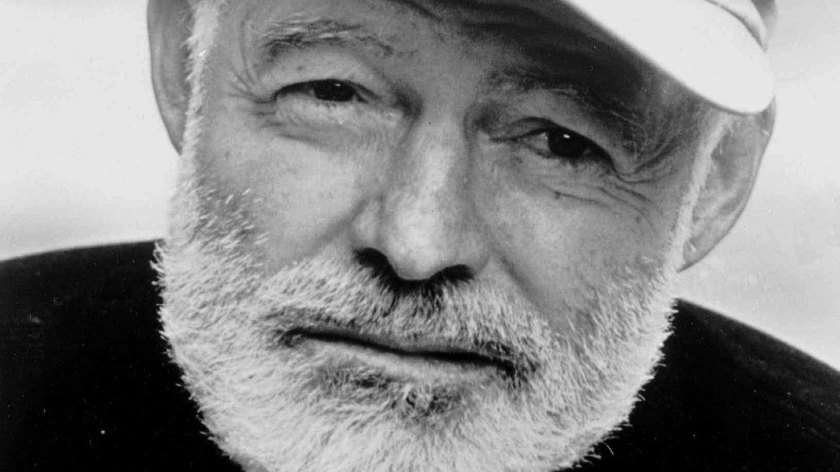Ernest Hemingway’s fame soared in two ways.
As a writer, he was popular and praised. As a person, he was something more.
People knew him (shown here) as a pop-culture figure who traveled the globe and did it all – food, drink, romance, adventure – to excess. It was an impressive reputation … even if some of it wasn’t true.
“The public persona became such a burden to him,” said Lynn Novick, who combined with Ken Burns to mold “Hemingway,” a compelling, three-night documentary that starts Monday (April 5) on PBS, So it was “wonderful to discover him young, before he became that stereotype.”
Still, Burns told the Television Critics Association, it was an impressive stereotype. It was “the persona of the wild man, the drunk, the bar guy, the big-game hunter, the big-sea fisherman.”
Part of it was true. Hemingway was an ambulance driver who was seriously wounded during World War I. He was an adventurer who had close calls. He loved many women and married four of them.
But he also exaggerated his own life, worried about failure and worked hard, Burns said. He “had that great discipline every single day, to write.”
And he did it with precision, said Jeff Daniels, who reads Hemingway passages throughout the film, “rewriting an ending 47 times.”
What emerged was an uncluttered style. “There’s such a brevity and a simplicity,” Daniels said. It has “no adornment. Since doing the reading, I have ceased using adjectives and adverbs.”
That looks easy, Burns said, until researchers see “the different drafts, … how hard he worked and how seriously he took it. Not every word he wrote is pure genius, but when it is, there’s nothing better.”
Burns sees several Hemingway novels as high art, including “The Sun Also Rises,” “A Farewell to Arms,” “For Whom the Bell Tolls” and “The Old Man and the Sea.” Among the shorts stories, he says, “are 10, 12, 15 masterpieces of great, great art.”
The Hemingway style emerged partly from his brief time as a newspaper writer – and partly, perhaps, from his Midwestern roots.
He grew up in Oak Park, Ill., where his father was a doctor, but he spent most of his first 21 summers at a cottage on a Michigan lake. His mother had a separate cottage to do her artwork; Hemingway and others (especially his younger sister Sunny) were free to roam.
That made Daniels – a movie star who still lives lakeside near his Michigan home town – a logical person to become Hemingway’s voice. “This was Lynn’s selling point,” Burns said. “It was, ‘He’s from Michigan; he can do this. He knows about fishing.”
Daniels agreed, in terse, Hemingway-esque style: “I have seen water; I have seen boats.”
Burns and Novick had been considering the project for decades, Novick said. Seven years ago, they interviewed Hemingway’s son Patrick, just in case he wasn’t aroumd later. (He still is, at 92.)
Researching the author, they learned about a man who easily attracted and shed people. “He was so terrible to so many of the great friends he had,” Novick said. “He had a talent for becoming alienated from people who cared about him … and hurting people in the way he betrayed them in his work.”
Fearful of being abandoned by lovers (after that happened to him as a young man), he left them first. Fearful of suicide (which his father did), he killed himself in 1961, at 61.
People have pointed to many reasons for the suicide, but Burns points to the “traumatic brain injuries that he suffered throughout his life.” These can “cause the kind of things – the alcoholism and the drug addictions that can add to madness and mania.”
– “Hemingway,” 8-10 p.m. Monday through Wednesday (April 5-7), PBS.
– Most stations will rerun it from 10 p.m. to midnight; check local listings.
